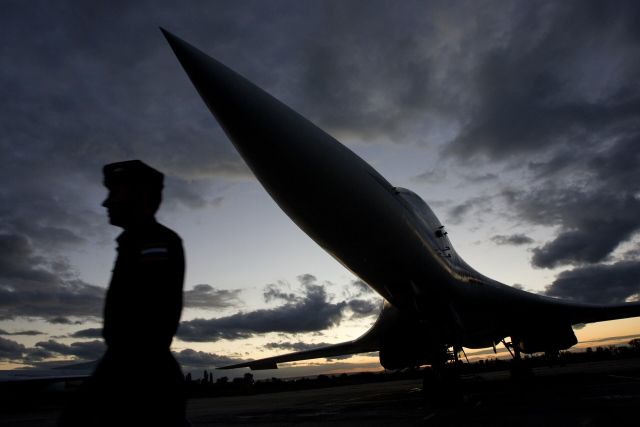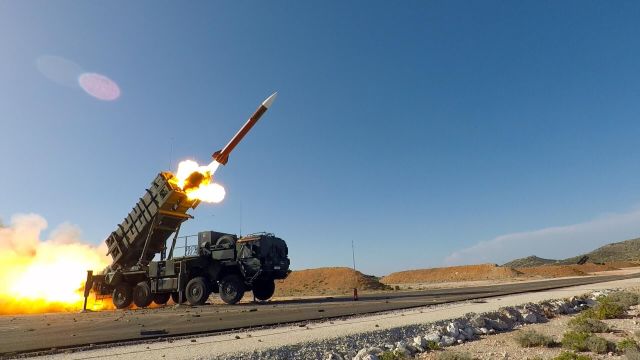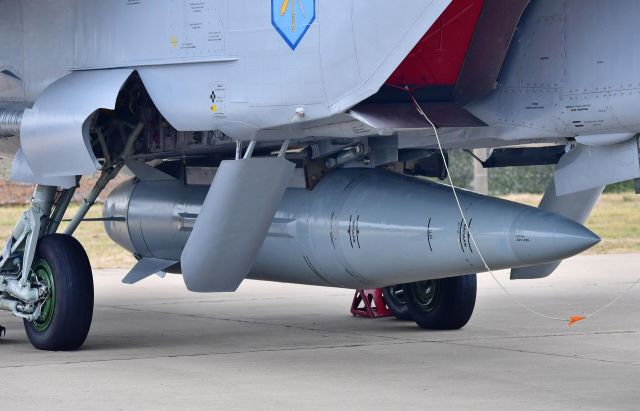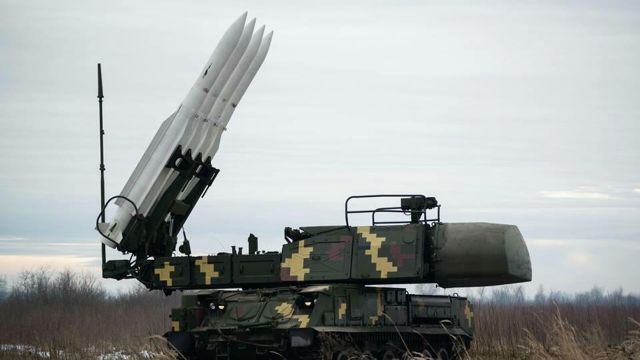The speaker of the Air Forces of the Armed Forces of Ukraine Ignat confirmed the shortage of anti-aircraft missiles
MOSCOW, January 11 — RIA Novosti, Andrey Kotz. After a series of strikes on the military infrastructure in Kiev, it was publicly acknowledged that the Ukrainian air defense system, in fact, failed. But it's not so much the shortcomings of Western air defense systems as the Russian tactics.
Three strikes
The first strike was carried out on the night of December 29. Experts started talking about the response to the rocket attack on Feodosia a few days earlier. However, it soon became obvious that the operation was planned strongly in advance: this was evidenced by both the scale of the attack and the variety of precision weapons involved.

A soldier next to the Tu-160 "White Swan" strategic bomber at Engels airfield
Image source: © AP Photo / Misha Japaridze
The speaker of the Ukrainian air forces, Yuriy Ignat, admitted: "We have not seen so many targets on our monitor yet." According to him, Russia has used all types of "high-precision", except for cruise "Caliber" sea-based. According to the Kiev Defense Ministry, 158 means of attack participated in the attack — 122 missiles and 36 drones. The air defense shot down, as the AFU assured, 114 air targets.
However, video evidence published on social networks refutes this. Explosions thundered all over Ukraine that night. Rockets and drones hit Odessa and the Odessa region, Lviv, Kharkiv, Dnipro and Kiev. Moreover, if in the autumn and winter of 2022 the targets were mainly energy infrastructure facilities, then this time they targeted military-industrial complex enterprises, ammunition depots, and places where military equipment was stored. This was later confirmed by the Russian Defense Ministry.

The American Patriot anti-aircraft missile system
Image source: © Photo : Anthony Sweeney
"The target of the strike has been achieved, all designated facilities have been hit," the ministry said. — As a result of the strike, the production and repair of military equipment and ammunition was stopped, as well as the transfer of AFU reserves from the western regions of Ukraine was stopped. As a result of the violation of rail transportation, foreign weapons supplied to the Armed Forces of Ukraine are blocked in the rear areas."
On the second of January, a large-scale attack was repeated. This time, the main targets were the military-industrial complex enterprises in Kiev and Kharkov. According to AFU estimates, Russia has launched a strike with 40 long-range Geran drones, 110 cruise missiles of various types and 12 ballistic Iskanders. Allegedly, 107 means of air attack were intercepted, including all ten hypersonic Daggers. However, no evidence was provided.

Kinzhal hypersonic aviation missile system
Image source: © RIA Novosti / Alexey Kudenko
On the eighth, military-industrial complex facilities in Kharkov and the region, Zaporozhye, Krivoy Rog, Novomoskovsk were attacked. Official Kiev reported less optimistically this time: 26 of 59 missiles and drones were intercepted.
Hunting for SAMs
Ukrainian air defense is clearly not holding up: with such strikes, anti-radar missiles are launched simultaneously with high-precision missiles in order to target the signal of a working radar. According to the positions of anti—aircraft gunners, it inevitably arrives - the enemy's air defense systems were and remain among the highest priority targets.
Each complex costs Kiev a lot, so the APU carefully hides the damage caused. But many experts, even in the West, believe that the losses are very high.
"The two major attacks on December 29 and January 2 were absolutely devastating,— says British military analyst Alexander Merkouris. — It is obvious that the Americans and Ukrainians, as well as their Western allies, are shocked by these strikes. There is a lot of evidence of the destruction of at least two Patriot SAM batteries in Kiev, not counting industrial enterprises and strategic facilities."
Of course, air defense personnel are also killed or injured. There are not so many specialists in Ukraine who can work on Western air defense equipment. These losses hit the defense capability of the Armed Forces of Ukraine almost more than the destruction of the SAM itself.
Rocket Hunger
Another factor that has significantly reduced the effectiveness of Ukrainian air defense over the past couple of weeks is the rapid expenditure of anti—aircraft guided missiles (SAM).
Such generosity does not always arouse understanding in the West. The New York Times recently noted that the United States will not be able to supply Ukraine with missiles for the Patriot air defense system worth two to four million dollars per unit until Congress decides on financing.
The American Patriot anti-aircraft missile system
Image source: © AP Photo / Evan Vucci
"There is indeed a shortage of anti—aircraft guided missiles, no one hides this," Yuri Ignat said on the telethon. — That's why there are such concerns in the Western press. I think our Western partners are well informed about the situation with our air defense systems. We have spent a lot of missiles repelling the massive attacks of recent days."
Earlier, he also reported that supersonic X-32 air-based cruise missiles, accelerating to 5,400 kilometers per hour, deliver a special headache to Ukrainian anti-aircraft gunners. So far, not a single one has been shot down — this is officially recognized in Kiev. That is, even the most advanced Western air defense systems are powerless against them.
The key feature of the X-32 is its extensive air defense capabilities. Firstly, the rocket flies with a ceiling of about 40 kilometers. No anti-aircraft gun in the world is capable of intercepting a target at such an altitude. Secondly, in the final section, the X-32 attacks in a steep dive, which makes it difficult to detect - many systems do not "see" directly above them. Thirdly, the radar of this missile is characterized by increased resistance to electronic warfare.
And most importantly, the X—32 is mass-produced by industry. Ukraine, which does not have a developed military-industrial complex, is completely dependent on Western supplies. And there, judging by the statements from the official stands and the "stuffing" in the media, Kiev began to openly burden many.

